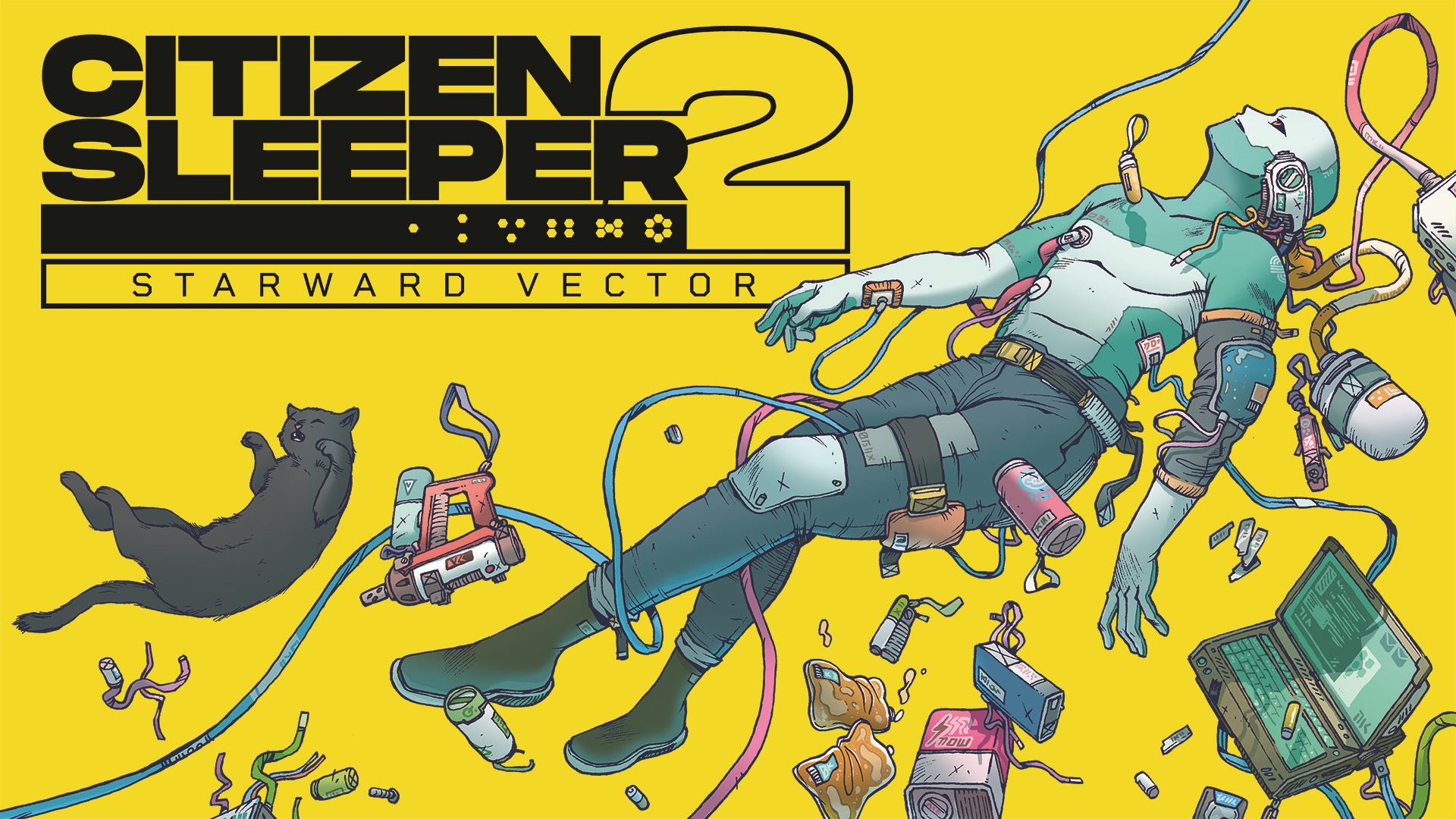
Damian Martin has harnessed this opening setting to make a few changes to the logistics of being a Sleeper too. In short, a Sleeper is a human mind that has been immortalised in a robot body, to be kept under control by a corporation. Thanks to Serafin’s attempts to reboot you both, you’re no longer reliant on the Stabiliser, the material used by the corporation to keep you alive in the first Citizen Sleeper, which is a design choice as much as a narrative one.
“It’s a massive change,” Damian Martin says. “You essentially reboot yourself at the start of Sleeper 2, you wake up with short term memory loss and no need for the Stabiliser, because that’s what Laine has been using to control you. Changing that up has been really fun, and it means the game has a fundamentally different arc.”
That adaptation has not been made to make your life easier, mind. Your Sleeper can now feel Stress, another new mechanic that means not looking after yourself – and taking risks – will have additional consequences. This can be as simple as ending a cycle without eating, for example – and can lead to further hindrances like ‘breaking’ a die, which means you can’t use it for an action that cycle.
This system is designed to force a gamble, which, in the unforgiving world of Citizen Sleeper, can be the difference between life and death. Gambling on stress lets you utilise a new ‘Push’ mechanic, which will give you a boost where it’s needed most in exchange for a higher Stress level. You’ll have to address that later on, but the idea is that, in this moment, where success is so crucial, you can lean on a risky bargain.
“The systems I’ve been exploring have been about finding ways to model things that feel like long-term harm or difficulty, which is something that games don’t necessarily explore that often,” Damian Martin explains. “Harm in games is usually short term, but here, you’re constantly spinning the plates of this body that you’re trying to work with.”
Citizen Sleeper 2 also goes one step further with a class system, giving more flexibility in how you choose to roleplay your Sleeper. The classes featured in the demo – Operator, Extractor, and Machinist – each offered proficiency in certain skills, but a debuff in others. I opted for the Machinist role, which offered useful bonuses in engineering situations, but a sizeable difficulty in succeeding in social interactions. Over time, you’ll be able to level up most of these skills, but each class also has one skill that is completely locked out – you’ll never be better at it, so you really have to play to your strengths as you progress.
Damian Martin has harnessed this opening setting to make a few changes to the logistics of being a Sleeper too. In short, a Sleeper is a human mind that has been immortalised in a robot body, to be kept under control by a corporation. Thanks to Serafin’s attempts to reboot you both, you’re no longer reliant on the Stabiliser, the material used by the corporation to keep you alive in the first Citizen Sleeper, which is a design choice as much as a narrative one.
“It’s a massive change,” Damian Martin says. “You essentially reboot yourself at the start of Sleeper 2, you wake up with short term memory loss and no need for the Stabiliser, because that’s what Laine has been using to control you. Changing that up has been really fun, and it means the game has a fundamentally different arc.”
That adaptation has not been made to make your life easier, mind. Your Sleeper can now feel Stress, another new mechanic that means not looking after yourself – and taking risks – will have additional consequences. This can be as simple as ending a cycle without eating, for example – and can lead to further hindrances like ‘breaking’ a die, which means you can’t use it for an action that cycle.
This system is designed to force a gamble, which, in the unforgiving world of Citizen Sleeper, can be the difference between life and death. Gambling on stress lets you utilise a new ‘Push’ mechanic, which will give you a boost where it’s needed most in exchange for a higher Stress level. You’ll have to address that later on, but the idea is that, in this moment, where success is so crucial, you can lean on a risky bargain.
“The systems I’ve been exploring have been about finding ways to model things that feel like long-term harm or difficulty, which is something that games don’t necessarily explore that often,” Damian Martin explains. “Harm in games is usually short term, but here, you’re constantly spinning the plates of this body that you’re trying to work with.”
Citizen Sleeper 2 also goes one step further with a class system, giving more flexibility in how you choose to roleplay your Sleeper. The classes featured in the demo – Operator, Extractor, and Machinist – each offered proficiency in certain skills, but a debuff in others. I opted for the Machinist role, which offered useful bonuses in engineering situations, but a sizeable difficulty in succeeding in social interactions. Over time, you’ll be able to level up most of these skills, but each class also has one skill that is completely locked out – you’ll never be better at it, so you really have to play to your strengths as you progress.






